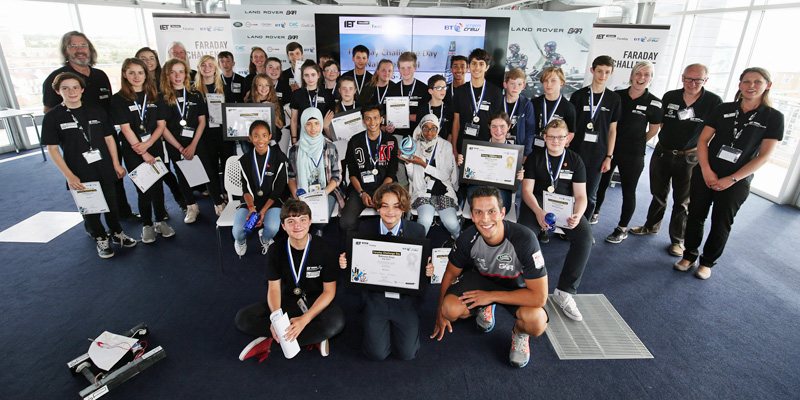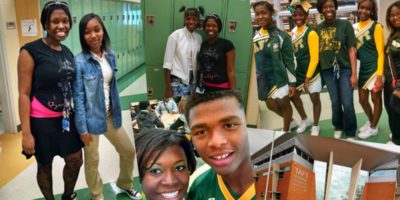Holly Margerison-Smith is Education Manager: Faraday and Educational Projects at the IET, where she oversees the Faraday programme and has responsibility for the ongoing day-to-day management and evolution of all the products within the Faraday portfolio. Prior to this she had roles at the Science Council and the Medical Research Council. Holly studied biological sciences at the University of Leicester, followed by human nutrition at the University of Sheffield.
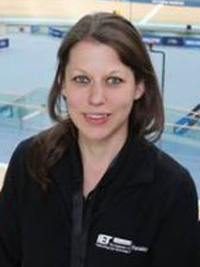
“…We see the ‘lightbulb moment’ at nearly every Faraday Challenge Day that we attend. Both girls and boys will suddenly realise what they have achieved, how they have done it, and what that now means for where they can take this learning to develop their project further…”
My route to working in tech engagement
With a degree in Biological Sciences and a MMedSci in Human Nutrition, my early career was spent at the Medical Research Council where I worked as part of the Human Nutrition Unit on many public engagement events, including the annual Cambridge Science Festival and a series of Sizzling Science cookery demonstrations.
From there I went on to join the Science Council as a Careers from Science Manager. Here, I was responsible for running the Future Morph careers website, a web-based initiative which engages young people in appreciating why studying STEM is important and diverse range of career options open to them. I was also responsible for the wider Careers from Science activities including the Future Morph Careers Quest and the Hidden Science partnership with Orange’s Do Some Good phone app, which started off my interest in the world of tech!
Now, working at the IET, I get to indulge my love of tech gadgets and coding with public engagement and education via the micro:bit project. The IET was one of the 29 founding partners in the BBC micro:bit project which, in the first year, succeeded in giving one million of these devices out to every Year 7/S1 child in the UK, their educators and the informal learning community for free.
My role at the IET on a day to day basis
I manage the 5-19 Education department’s IET Faraday programme. This includes the newly re-launched Faraday website for secondary – https://faraday-secondary.theiet.org/ – and primary teachers – https://faraday-primary.theiet.org/.
These websites are designed to make it easier for teachers, parents and students to find information and resources linked to the IET’s education activities and STEM. The sites offer amazing, free STEM resources for schools, including classroom posters, careers packs, videos, activities and lesson plans. Resources can be filtered by subject, age range, activity duration, Key Stage and even by exam board.
I also manage the IET’s Faraday Challenge Days – an annual engineering-based competition for schools in which teams of students aged 12-13 years compete against one another to see who can design, create and promote the best solution to a given challenge.
All challenges are genuine, real-life engineering problems. The winners from each event receive prizes for themselves and their schools. The top five teams across the UK win an all-expenses-paid trip to the national final to compete for a cash prize for their school.
How the IET is supporting use of the BBC micro:bit in schools
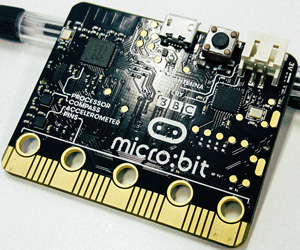
- Teaching resources – production of a full suite of resources, each with accompanying video-related material from IET.tv.
- Faraday Challenge Days – two full seasons incorporating the micro:bit reaching over 9,000 students at over 600 schools between Jan 2016 to July 2017. The first season aimed at Year 7 students to tie in with the BBC remit and the second at Year 8 students and their equivalents throughout the whole of the UK. These off-timetable STEM activity days encouraged creativity, team working, problem solving and the application of the technology to real-life situations.
- Regional events – working with the IET corporate and academic partner institutions around the UK, including Schneider Electric, Intel and Thales, at weekends to encourage the public to see behind the scenes and learn more about the micro:bit.
- micro:bit case studies – we asked three engineers to design a program for their micro:bit that would help them to carry out a task within their working environment or everyday life. These case studies have been written up into a student booklet for them to work through with an accompanying video – https://faraday-secondary.theiet.org/stem-activities/microbit/microbit-case-studies/.
Things you can do with a micro:bit
It’s less “what can you do with a micro:bit?” and more “what can’t you do with one?”! The micro:bit includes:
- Buttons (A and B) – push switches for use as input devices. Programs can be written that respond to these being pressed.
- Pins – for the connection of external input and output devices such as switches, buzzers, sensors or LEDs.
- LED screen – a 5×5 grid which can produce displays of different letters, numbers and other characters. It can also be used as a sensor to sense the amount of ambient light.
- Accelerometer – inbuilt input sensor that measures acceleration forces. This can be used as a motion sensor in a programmable system.
- Bluetooth – allows the micro:bit to communicate wirelessly with devices like a smartphone or another computer.
Check out the IET Faraday resources to find out how you can use the micro:bit to:
- Give tube travellers useful information about their journeys
- Develop a flood warning system
- Help save lighting energy
- Help people exercise more regularly
There’s more on the IET Faraday website – https://faraday-secondary.theiet.org/resource-pages/.
Organisations we work with
We work with a number of organisations to help spread the word about the Faraday programme, develop new and improved resources, and grow the Faraday Challenge Days season including Kitronik, CRAY, Motorola, the Science and Technology Facilities Council, Queen Mary University of London, Bosch and the Jack Petchey Foundation.
On our new primary project, we have also been working closely with the BBC on their Terrific Scientific project and the Wellcome Trust on their Explorify project.
Girls who try out programming using the micro:bit are 70% more likely to choose ICT / computer science as a result
We see the ‘lightbulb moment’ at nearly every Faraday Challenge Day that we attend. Both girls and boys will suddenly realise what they have achieved, how they have done it, and what that now means for where they can take this learning to develop their project further.
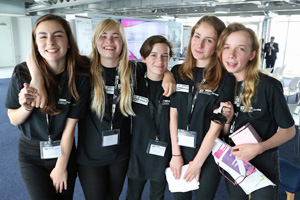
“I learned a lot today and I now know more about microbits.”
“I have never been taught about micro:bits before, but after this I feel more confident.”
“I loved the Faraday Challenge. I strongly think every school should complete this challenge because from my point of view I have never worked with microbit and now I have.”
“Learnt lots about coding and was inspired by the micro:bit.”
“Before today, I had never used a microbit. I enjoyed using it and learning how to do new things.”
IET Engineering Open House Day event
We named this event Coding the Future and ran it as a drop-in event for the general public at the IET London: Savoy Place office. This event was aimed at the whole family to encourage them to come along and find out more about the micro:bit whether they are new to coding or a bit of a pro – there was something for everyone!
On the day we ran various zones for the micro:bit including ‘compete, collaborate and just for fun’, which were run by our code crew. We also invited CoderDojo and the micro:bit Foundation to come along with some cool gadgets and demos to give the public a great hands-on interactive experience. Greenpower, First Lego League, Curiscope and many more were also in attendance to give the public a variety of stands to look at and learn from.
Here’s a little #MondayMotivation from Friday’s #IETOpenHouse @ewbuk pic.twitter.com/YvQeTtmOUS
— IET (@TheIET) July 31, 2017
Holding this event at our London office meant that the public were also able to have tours behind the scenes to view the 100 engineering ideas that have changed the world and our hall of fame to view engineers from the past and present. There were also various mirrored segments for young people to view themselves as the engineers of the future.
This event and those similar to it enable us to give young people opportunities to open their minds to the whole world of engineering and technology careers that are available, and the variety of routes that can be used to accessed them.
Next for Faraday Challenge
For the upcoming Faraday Challenge Day season (2017-18) we are working with Thorpe Park on a rollercoaster challenge. The students taking part will be introduced to the challenge by a briefing video led by Thorpe Park engineers asking them to design an attraction within an available space in the theme park.
Students will work throughout the day in teams of six as real-life engineers. Support will be provided by the challenge leader but the emphasis is on students working as a self-directed and motivated team, allocating individual roles and responsibilities which support effective, efficient and safe practise throughout the day.
On #NationalRollerCoasterDay why not register your school for a #FaradayChallengeDay in partnership with @THORPEPARK https://t.co/hRkpPbYlLk pic.twitter.com/QIx64khO30
— IET Faraday (@IETFaraday) August 16, 2017
I am also going to be continuing to develop and build up the new websites with brand new teaching resources to appeal to a wider range of teachers; as well as a focus on the new careers section to communicate the wide variety of exciting roles within engineering and technology – some of which haven’t even been invented yet!
https://faraday-primary.theiet.org/
https://faraday-secondary.theiet.org/about-iet-faraday/
https://twitter.com/IETFaraday
https://www.facebook.com/ietfaraday/
BBC micro:bit image credit: By Ravi Kotecha (Own work) [CC BY-SA 4.0 (http://creativecommons.org/licenses/by-sa/4.0)], via Wikimedia Commons

